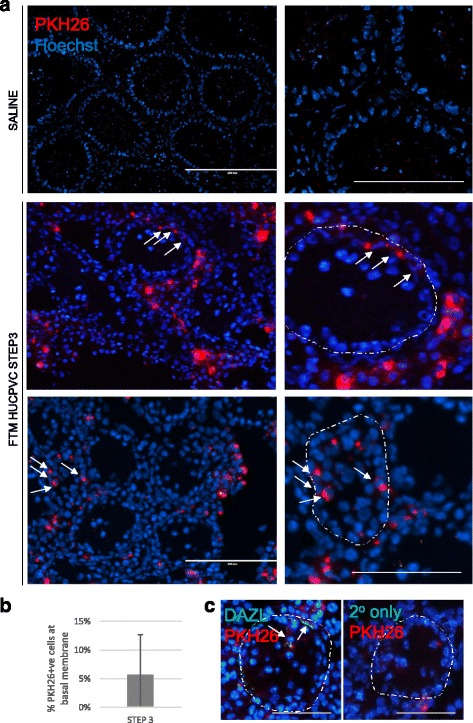Fig. 5.

A portion of Step 3-induced first trimester (FTM) human umbilical cord perivascular cells (HUCPVCs) display functional properties of SSCs in a modified xenograft assay. a Representative micrographs of xenograft assay tissue sections including saline control (top row, with low magnification on left and high magnification on right). Scale bars = 200 μm and 50 μm, respectively. Arrows indicate PKH26-positive cells near the basal membrane of the seminiferous tubule, the contour of which is delineated by the dotted line. b Quantification of the percentage of total PKH26-positive cells that localize within seminiferous tubules and near the basal membrane as opposed to the interstitial regions. c Representative micrograph of DAZL (green) immunohistochemistry on frozen sections containing PKH26-labeled human cells (red) (left panel) and the corresponding no primary antibody negative control (right panel). Scale bar = 100 μm. Arrows indicate PKH26-positive/DAZL+ cells near the basal membrane of the seminiferous tubule, the contour of which is delineated by the dotted line
